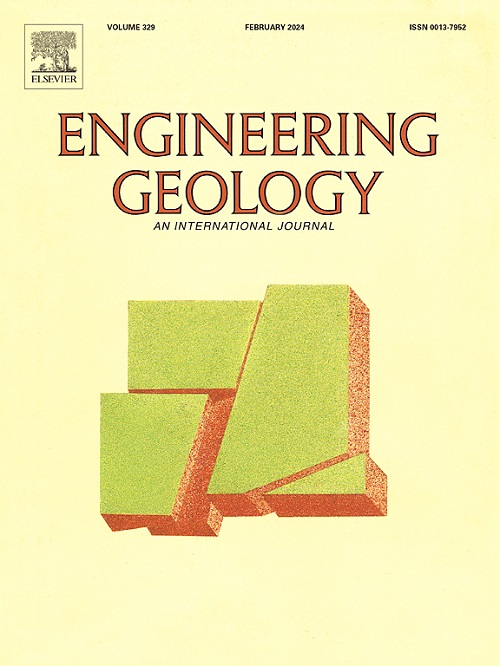Data-driven framework for predicting rate of penetration in deepwater granitic formations: A marine engineering geology perspective with comprehensive model interpretability
IF 6.9
1区 工程技术
Q1 ENGINEERING, GEOLOGICAL
引用次数: 0
Abstract
Deepwater oil and gas resources are vital for meeting global energy demand, supporting economic growth, and ensuring energy security. The marine engineering geology of deepwater environment presents significant challenges for drilling operations, with rock behavior of deep granitic formations increasing the risk of well control incidents. Rate of Penetration (ROP) is a crucial parameter for evaluating efficiency, ensuring operational safety and controlling economic costs of deep-water drilling. In recent years, data-driven methods have provided new ways for predicting ROP in deepwater drilling. In this work, the database is derived from actual deepwater drilling operations at depths ranging from 2203 to 2938 m in China and three different data-driven methods are used to predict ROP based on field measured deepwater drilling data. After preliminary screening, the results show that the method of LightGBM has the best prediction performance. Subsequently, hyperparameter optimization has been conducted based on Bayesian principle. A comprehensive model interpretability approach based upon SHAP and PDP is adopted to conduct explanatory analysis on the improved LightGBM from global and local perspectives. The contribution degree of different feature variables to ROP is obtained as follows: TORQUE, BitTime, Pump Time, WHO (weight on hook), SPP (standpipe pressure), WOB (weight on bit), FLWPump (flow pump), and RPM (revolution per minute). Furthermore, the impact of important feature variables on ROP is analyzed with consideration of actual operating conditions and drilling hydraulics.
深水花岗岩地层渗透率预测的数据驱动框架:具有综合模型可解释性的海洋工程地质视角
深水油气资源对于满足全球能源需求、支持经济增长和确保能源安全至关重要。深水环境的海洋工程地质给钻井作业带来了重大挑战,深层花岗岩地层的岩石行为增加了井控事故的风险。机械钻速(ROP)是评价深水钻井作业效率、确保作业安全和控制经济成本的重要参数。近年来,数据驱动方法为预测深水钻井ROP提供了新的途径。在这项工作中,该数据库来源于中国2203至2938米深度的实际深水钻井作业,并使用了三种不同的数据驱动方法来预测基于现场测量的深水钻井数据的ROP。初步筛选结果表明,LightGBM方法预测效果最好。随后,基于贝叶斯原理进行超参数优化。采用基于SHAP和PDP的综合模型可解释性方法,从全局和局部角度对改进后的LightGBM进行解释分析。不同特征变量对ROP的贡献程度如下:TORQUE、BitTime、Pump Time、WHO(钩上重量)、SPP(立管压力)、WOB(钻上重量)、FLWPump(流量泵)、RPM(转分钟数)。在此基础上,结合实际工况和钻井水力因素,分析了重要特征变量对机械钻速的影响。
本文章由计算机程序翻译,如有差异,请以英文原文为准。
求助全文
约1分钟内获得全文
求助全文
来源期刊

Engineering Geology
地学-地球科学综合
CiteScore
13.70
自引率
12.20%
发文量
327
审稿时长
5.6 months
期刊介绍:
Engineering Geology, an international interdisciplinary journal, serves as a bridge between earth sciences and engineering, focusing on geological and geotechnical engineering. It welcomes studies with relevance to engineering, environmental concerns, and safety, catering to engineering geologists with backgrounds in geology or civil/mining engineering. Topics include applied geomorphology, structural geology, geophysics, geochemistry, environmental geology, hydrogeology, land use planning, natural hazards, remote sensing, soil and rock mechanics, and applied geotechnical engineering. The journal provides a platform for research at the intersection of geology and engineering disciplines.
 求助内容:
求助内容: 应助结果提醒方式:
应助结果提醒方式:


